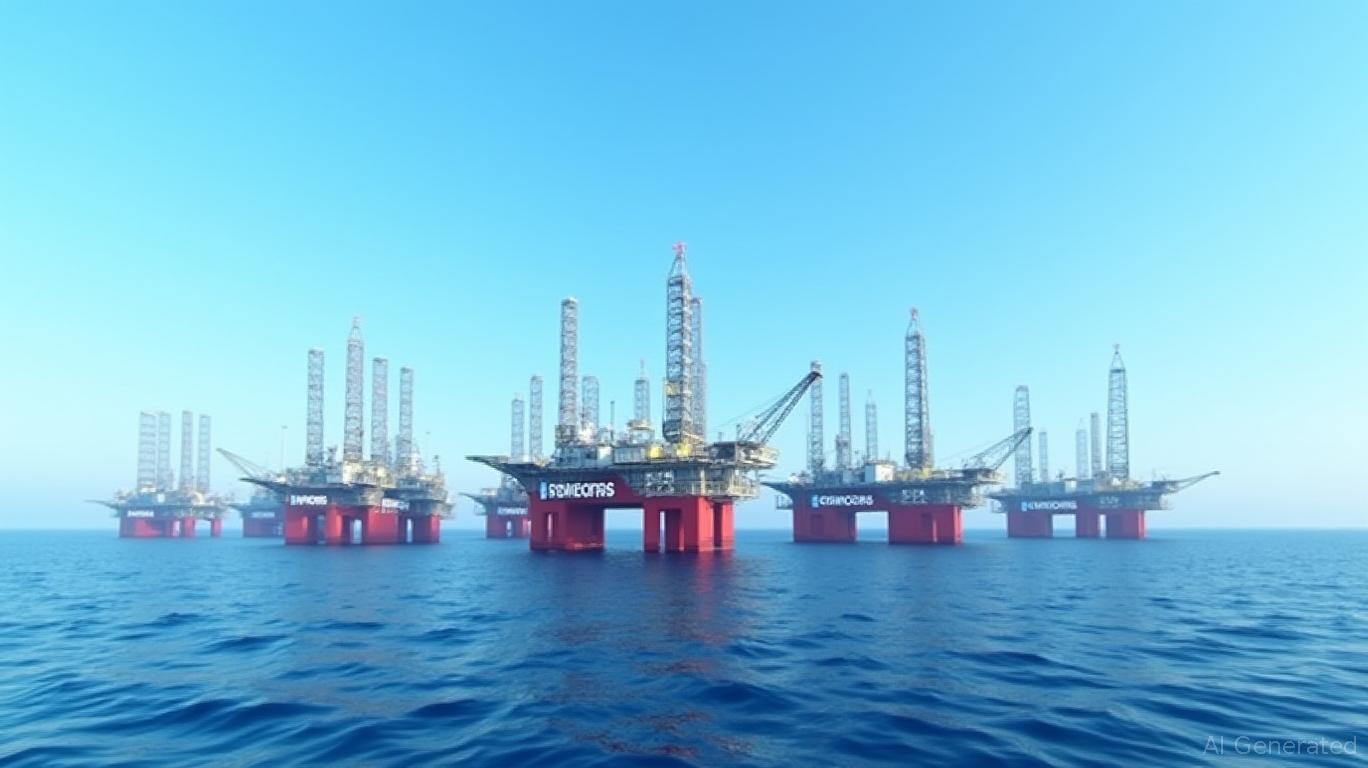Borr Drilling's Dividend Pause: A Prudent Move or a Signal of Strain?
The suspension of Borr Drilling's dividend for Q1 2025 has sparked debate among investors, with the company citing “uncertain market conditions” as the primary driver. While dividend cuts often raise red flags, a closer look at Borr's financial position and strategic moves reveals a nuanced picture. Is this a defensive maneuver to preserve liquidity, or does it hint at deeper vulnerabilities? Let's dissect the data.
The Dividend Decision: Liquidity Over Immediate Returns
Borr's dividend suspension, announced on May 21, 2025, was framed as a preemptive step to bolster its balance sheet amid macroeconomic uncertainty. The company reported a net loss of $16.9 million for Q1—down sharply from the previous quarter's profit—but emphasized its liquidity strength: $320 million in available funds, including $170 million in cash and a $150 million undrawn revolving credit facility.

The move aligns with a broader trend in energy sectors, where companies are prioritizing cash retention to navigate commodity price swings and customer hesitancy. For Borr, this decision appears calculated:
- EBITDA stability: Despite a quarterly drop to $96.1 million (from $136.7 million in Q4 2024), the figure still aligns with the $460 million annual consensus—a critical benchmark for investors.
- Cash inflows: The recovery of $120 million in Mexican receivables and $35 million in post-quarter mobilization fees underscores operational execution, even in challenging environments.
Operational Resilience: Contracts and Rig Activity
Borr's operational metrics provide further context. Its 2025 contract coverage stands at 79%, with an average day rate of $147,000—key indicators of demand health. Management aims to push this to 80–85% by year-end, while 2026 coverage has already reached 35%, driven by long-term deals in Mexico, a core market.
The resumption of three Mexican rigs and new contracts for the Vali and Arabia I rigs have boosted the operating fleet to 22 units by Q2. This expansion signals a rebound in activity, which should translate to higher EBITDA in coming quarters.
Risks and the Path Forward
The company's caution is justified. Oil prices remain volatile, and customer delays (e.g., in Mexico) could strain cash flows. Borr's reliance on a few key markets—Mexico accounts for ~40% of contracted days—also introduces geographic concentration risk.
However, the dividend suspension avoids the pitfalls of over-leveraging. With no debt maturities until 2026 and a focus on 2026 contract locking, Borr is positioning itself to weather short-term turbulence.
Investment Implications
For investors, the decision to pause dividends reduces near-term payouts but could enhance long-term value. Key metrics to watch:
1. EBITDA trajectory: Does Q2/Q3 EBITDA rebound to meet the $460 million annual target?
2. Contract execution: Can Borr secure the remaining 15–20% of 2025 contracts and expand 2026 coverage beyond 35%?
3. Liquidity buffer: Will the $320 million cushion suffice if commodity prices dip further?
Conclusion: A Prudent Play for Patient Investors
While dividend cuts are never welcomed, Borr's suspension appears strategic rather than desperate. The company retains ample liquidity, maintains solid contract visibility, and is actively expanding its rig count—critical steps to capitalize on improving demand.
Investors should view this as a defensive play, not a red flag. For those with a long-term horizon, Borr's valuation—currently trading at ~5x 2025 EBITDA consensus—offers upside if contracts materialize as planned. However, short-term volatility remains a risk, particularly if oil prices falter.
In a sector where liquidity is lifeblood, Borr's pause may prove to be a savvy move to survive—and thrive—through the current uncertainty.
Analysis based on Borr Drilling's Q1 2025 results and market context as of June 6, 2025.

Comments
No comments yet